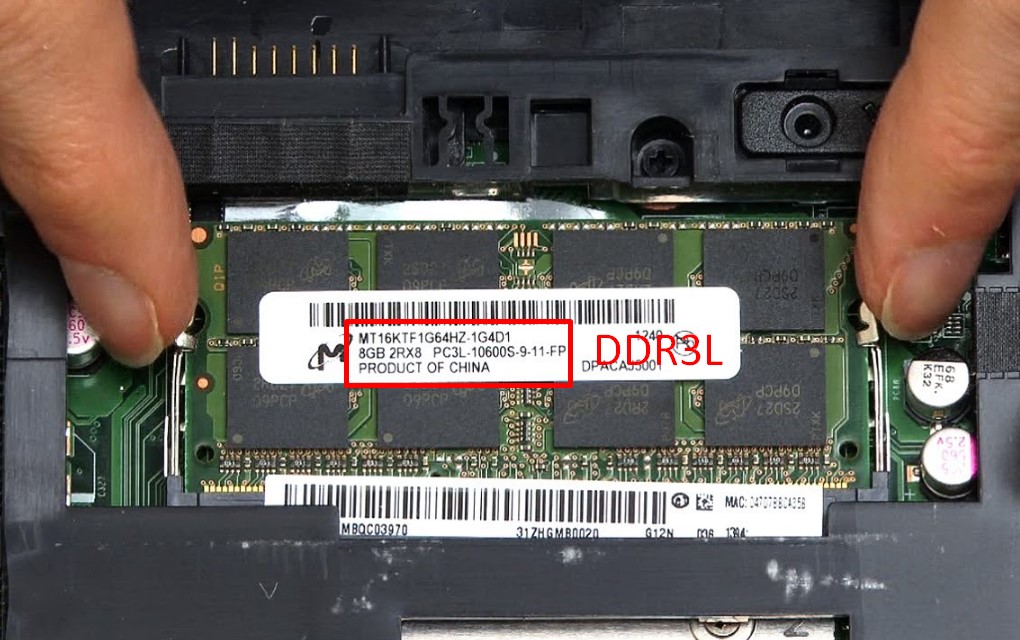- Slot Ddr3l Dipasang Ddr3 8gb
- Slot Ddr3l Dipasang Ddr3 Ddr4
- Slot Ddr3l Dipasang Ddr3 Ram
- Ddr3l Dipasang Di Slot Ddr3
- Slot Ddr3l Dipasang Ddr3 Sodimm
DDR3L or DDR3-Low Voltage RAM is a high speed computer memory that has same pins and size that of a normal DDR3 RAM but it is dual voltage memory. DDR3L memory can run on both 1.5V and 1.35V, which means it can run on both low and high voltages. The DDR3L standard is 1.35V and has the label ''PC3L'' for its modules. Examples include DDR3L‐800, DDR3L‐1066, DDR3L‐1333, and DDR3L‐1600. The DDR3U standard is 1.25V and has the label ''PC3U'' for its modules. Like DDR and DDR2 before them, DDR3 DIMMs are identified by their peak transfer capacity (often called bandwidth).

DDR3L modules are backwards compatible with DDR3 by design.
Slot Ddr3l Dipasang Ddr3 8gb
Manufacturers use the same integrated circuits for DDR3 and DDR3L. The highest quality ICs are tested for operating at 1.35 volts and are branded as DDR3L if they run properly. Other than that, there's no difference between them.
yes it is correct, that they should use the same Chips. So from a functionallity point of view it is really just the same compatibility issue as with DDR3 from one vendor to another vendor (or even just for one die shrink to the next die shrink).

JEDEC defines that the DIMM needs to be backward compatible. So if a JEDEC compliant DIMM is operating at 1.5V should be tested and verified from the vendor. But not too many DIMM vendors really state that the DIMM is JEDEC compliant.
E. g. I have seen DIMMs with devices not supporting specific CL that they would need to support to be JEDEC compliant ..
And in this case thre is no need that the DIMM really is backward compatible (even if it is just a question of Speed, or reliability over time).
Even standard DIMMs are theoretically interchangable, there are many compatibility issues between motherboard, controller and DIMM out there .. and DDR3L will not make it better ..
Guess thats the usual difference between theory and praxis ..
and so I prefer to look at the DIMM spec and at least verify that the 1.5V is a supported voltage on a DDR3L DIMM if I intend to use it in a DDR3 System…
Hermann
Slot Ddr3l Dipasang Ddr3 Ddr4

DDR3L modules are backwards compatible with DDR3 by design.
Slot Ddr3l Dipasang Ddr3 8gb
Manufacturers use the same integrated circuits for DDR3 and DDR3L. The highest quality ICs are tested for operating at 1.35 volts and are branded as DDR3L if they run properly. Other than that, there's no difference between them.
yes it is correct, that they should use the same Chips. So from a functionallity point of view it is really just the same compatibility issue as with DDR3 from one vendor to another vendor (or even just for one die shrink to the next die shrink).
JEDEC defines that the DIMM needs to be backward compatible. So if a JEDEC compliant DIMM is operating at 1.5V should be tested and verified from the vendor. But not too many DIMM vendors really state that the DIMM is JEDEC compliant.
E. g. I have seen DIMMs with devices not supporting specific CL that they would need to support to be JEDEC compliant ..
And in this case thre is no need that the DIMM really is backward compatible (even if it is just a question of Speed, or reliability over time).
Even standard DIMMs are theoretically interchangable, there are many compatibility issues between motherboard, controller and DIMM out there .. and DDR3L will not make it better ..
Guess thats the usual difference between theory and praxis ..
and so I prefer to look at the DIMM spec and at least verify that the 1.5V is a supported voltage on a DDR3L DIMM if I intend to use it in a DDR3 System…
Hermann
Slot Ddr3l Dipasang Ddr3 Ddr4
DDR3 vs DDR3L
There is a slight difference between DDR3 and DDR3L in the specification as DDR3L is a special type of DDR3. DDR3 , which stands for Double Data Rate type 3, is a type of RAM introduced in 2007. Currently, it is the most widely used type of RAM module for PCs as well as mobile devices such as laptops. DDR3 needs a voltage of 1.5V to work. There is a special type of DDR3 called DDR3L, which refers to the low voltage standard of DDR3. It uses 1.35V instead of 1.5V hence the power consumption is less. These low voltage standard RAMs are widely used in mobile devices because they consume less power enabling a longer battery life.
What is DDR3?
DDR3, which stands for Double Data Rate Type 3, is a type of Dynamic Random Access Memory (DRAM), which came as the successor of DDR and DDR2. It was released to the market in 2007 and today most computers and laptops in the market use DDR3 as the RAM. The voltage specification for DDR is 1.5 V and, therefore, it consumes very less power when compared to its predecessors DDR and DDR2. DDR3 standard allows chips up to capacity 8 GB. DDR3 RAM are available for different frequencies such as 800, 1066, 1333, 1600, 1866, 2133 MHz. A DDR3 RAM module used for personal computers has 240 pins and the length is 133.35 mm. The DDR3 modules used on laptops are called SO-DIMM and its length is much smaller with a length of 67.6 mm and less number of pins, which is 204 pins.
What is DDR3L?
DDR3L is a special type of DDR3 RAM where the letter ‘L' refers to low voltage standard. DDR3L uses just 1.35V, which is 0.15V lower than what is used in DDR3. The advantage of working under a low voltage is that the power consumption is low. The less power consumption means a better battery life can be achieved. Because of this DDR3L is mostly used in mobile devices such as laptops and embedded devices rather than in PCs. An added advantage of low power consumption is less heat generation, which is again useful for compact mobile devices. The other specifications such as memory density, frequencies and the protocols are same as in DDR3. DDR3L RAM is generally available as SO-DIMM modules that are 67.5 mm having just 204 pins rather than longer DIMM modules. Reason is that DDR3L is targeted for mobile devices and they have SO-DIMM slots.
What is the difference between D DR3 and DD R3L?
• DDR3L is a special type of DDR3 where L refers to low voltage standard.
• DDR3 needs a voltage of 1.5V while DDR3L needs only 1.35V.
• DDR3L consumes less power than DDR3.
• DDR3L generates less heat when compared to DDR3.
• DDR3L is mostly used in mobile devices such as laptops and embedded devices while DDR3 is mostly used in personal computers. However, the re are mobile devices, which use DDR3 as well.
• The market price of a DDR3L module is higher than the market price of a DDR3 module.
| DDR3 | DDR3L | |
| Name | Double Data Rate Type 3 | Double Data Rate Type 3 Low Voltage Standard |
| Voltage specification | 1.5 V | 1.35 V |
| Power Consumption | High | Less |
| Heat generation | High | Less |
| Memory Density | Up to 8GB | Up to 8GB |
| Supported Frequencies | 800, 1066, 1333, 1600, 1866, 2133 MHz | 800, 1066, 1333, 1600, 1866, 2133 MHz |
| Number of Pins | 240; SO-DIMM – 204 | SO-DIMM – 204 |
| Length | 133.35mm; SO-DIMM – 67.6mm | SO-DIMM – 67.5mm |
| Price | Low | High |
| Usage | Personal computers, Laptops, servers | Laptops, Mobile devices, Embedded systems |
Summary:
Slot Ddr3l Dipasang Ddr3 Ram
DDR3 vs DDR3L
The main difference between DDR3 and DDR3L is in the voltage specification. Voltage specification for DDR3 is 1.5V, but the voltage for DDR3L is less, which is 1.35V. The letter L in DDR3L refers to low voltage standard. As DDR3L is a special type of DDR3 all other specifications except the voltage remains the same. Because DDR3L needs lesser voltage, it consumes less power and generates less heat. Therefore, DDR3L is widely used for mobile devices that need a longer battery life.
Ddr3l Dipasang Di Slot Ddr3
Images Courtesy:
Slot Ddr3l Dipasang Ddr3 Sodimm
- DDR3 by osman gucel (CC BY 2.0)

